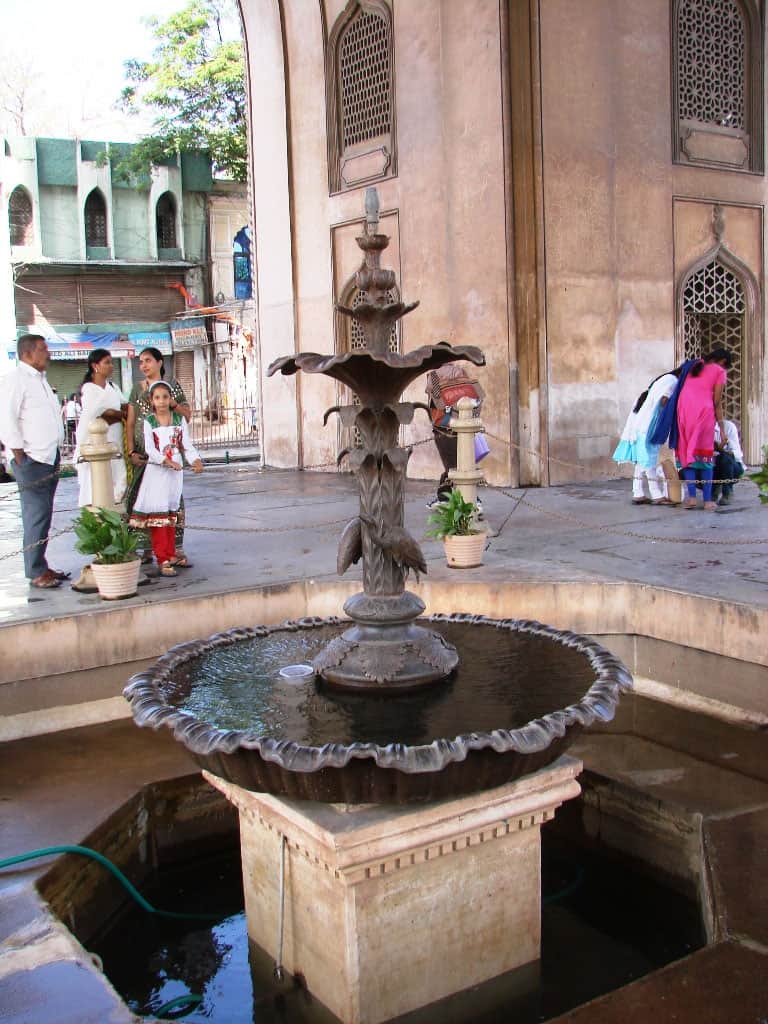Hyderabad: Fountains have been an integral part of the Indo-Islamic or Indo-Persian architecture in India for centuries. Hence one can find fountains, or houz as it is known in Persian, at important monuments, palaces, forts, palatial houses, mosques and even outside mausoleums.
In fact in Hyderabad when Mohammed Quli Qutb Shah, the fifth ruler of the Qutb Shahi dynasty, built the new city in 1591 after moving out of the Golconda fort, he wanted the fountains to be an integral part of the palaces and other royal residencies. The Golconda fort also has water fountains and one of the examples is the Katora Houz near it, which had a big fountain.
Other historical places in Hyderabad which have water fountains are the Qutb Shahi Tombs complex and the Charminar, which is the city’s foundational monument.
Rulers in other parts of the India then during have also given importance to the fountains and one can find it as integral part royal residencies, forts, monuments dating back to several centuries in Delhi, Uttar Pradesh, Madhya Pradesh and other parts of Central India.
Historians point out that during the designing of palaces and palatial houses, emphasis was laid on location, design and size. Architects were briefed in person by the rulers on gardens and fountains specifications.
With regard to the Golconda or Qutb Shahi dynasty (1518-1687), the fountain in front of the Hayath Bakshi Begum’s (daughter of Mohd Quli Qutb Shah) tomb in the Qutb Shahi tombs complex is crafted in marble and considered one of the most beautiful ones that exist in Hyderabad.
It is in the shape of a fish and when the water flows down, one can hear a sound that is similar to that of a fish swimming. It was a collaborative effort of artisans and engineers of the Qutb Shahi era, historians point out.
Another of the oldest fountains is at the Charminar and dates back to the 16th Century. The Gulzar Houz fountain was originally octagonal when it was constructed along with the Char Kaman in the 1590s, after Hyderabad was founded. Known as Char Su Ka Hou originally, Gulzar Houz was a public space, and unfortunately has been reduced to a dirty water fountain today.
Arrangements were also made to get water to the Golconda fort for both drinking and ornamental purposes from the Talab-e-Durg, which is now called Durgam Cheruvu. It is said that engineering worked on the principle of gravity. As the tank is at a higher altitude, the water flowed downwards from the Durgam cheruvu at a great speed into the fountains.
Subsequent rulers of the Deccan, the Asaf Jahis or the Nizams (1724-1948), who ruled from Hyderabad, also showed a great interest in fountains too after the Qutb Shahi rulers. Fountains are still also of the Chowmahalla Palace and Purani Haveli. Many were there at Khursheed Jah Devdi, Mahboob Mansion, Malwala Palace etc.,
While these fountains are striking, an outstanding one is at Ameenbagh — now the High Court parking area. It was built in the Greco-Roman style with impressive figurines. It replicates an elephant with water gushing out from its trunk.
“Hyderabad has several structures with fountains, and sadly nobody seems to care about these fountains. These should also be protected, in case miscreants try to portray those as something else in the future, in context of whatever is happening in north India,” remarked a heritage activist, who did not want to be quoted.







